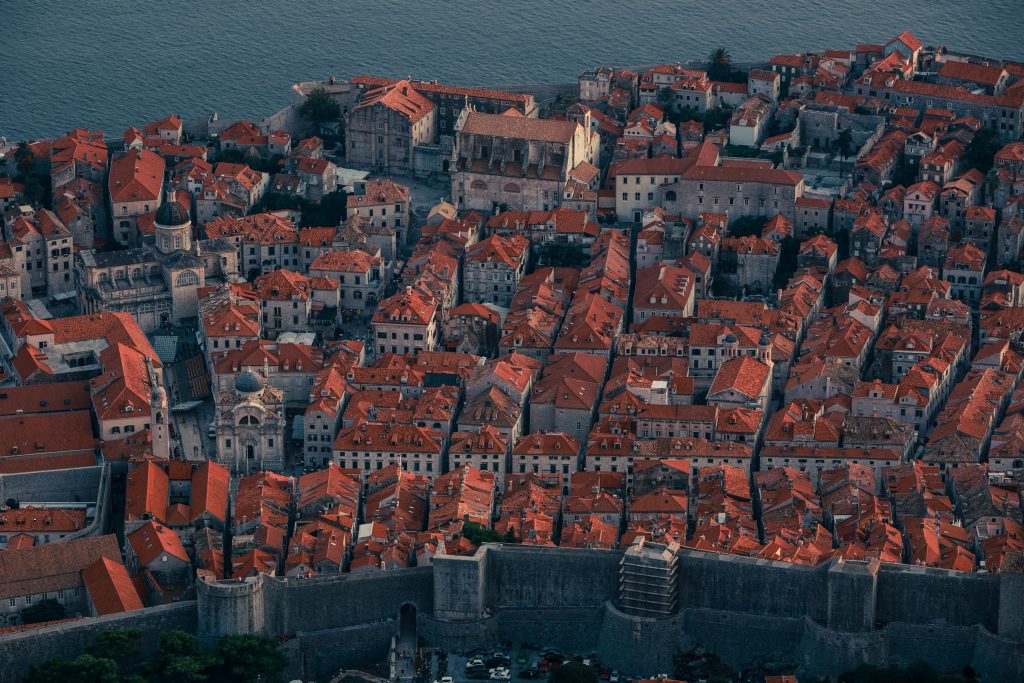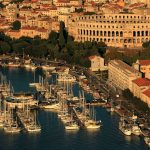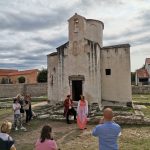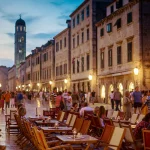From Istria to Dubrovnik, the Croatian Adriatic coast has witnessed throughout history the presence of various civilizations and cultures that found it the ideal land with resources to settle. If you believe that Croatia is an earthly paradise, then surely you would have coincided with the Illyrians, the Greeks, the Celts, the Romans, and the Byzantines, who left evidence of their passage along the coast.
Whether you are coming by plane, bus, or in your own car or camper, it is always a good idea to find a moment in your busy itinerary to be amazed by the enormous historical heritage that can be found on the 1,880 km of Croatian Adriatic coastline. These are just 10 of some of the historical sites that you must visit during your stay.
The Euphrasian Basilica in Poreč
Poreč’s most valuable cultural property, the Euphrasian Basilica, was registered on the UNESCO World Heritage Sites list in 1997. The Early Christian complex is the only complete monument in the world preserved from that period.
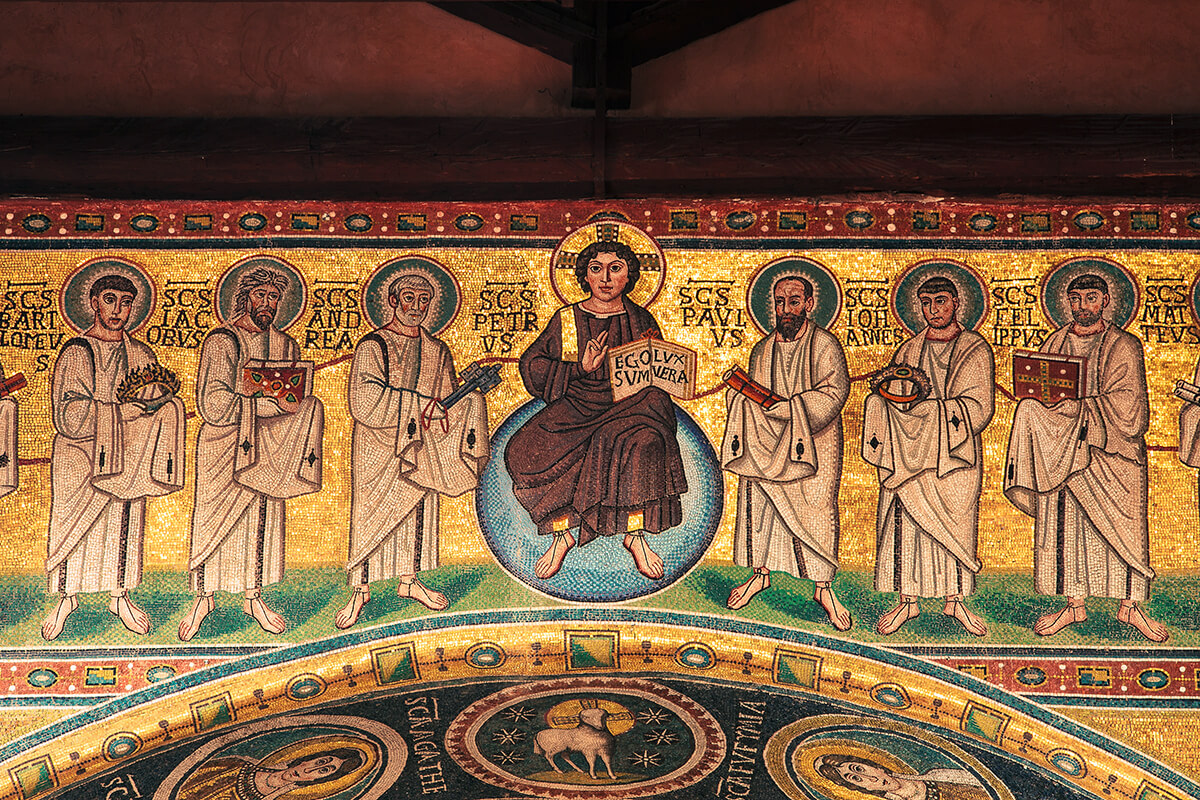
Photo: Mario Romulić
Built during the time of Bishop Euphrasius in the 6th century, it includes an atrium, baptistery, episcopal palace, mosaics, and remains of sacred buildings dating from the 3rd to 4th centuries. The mosaics that decorate the interior and the facade of the church are considered a valuable legacy of Byzantine art, and thanks to the floor mosaics and preserved scriptures, the periods of its construction and renovation can be read.
Source: Poreč Tourist Board
Pula Arena
The most famous and important monument, the starting and ending point of every sightseeing tour is the Amphitheater, popularly called the Pula Arena, which was once the site of gladiator fights. It was built in the 1st century AD during the reign of Emperor Vespasian, at the same time as the magnificent Colosseum in Rome.
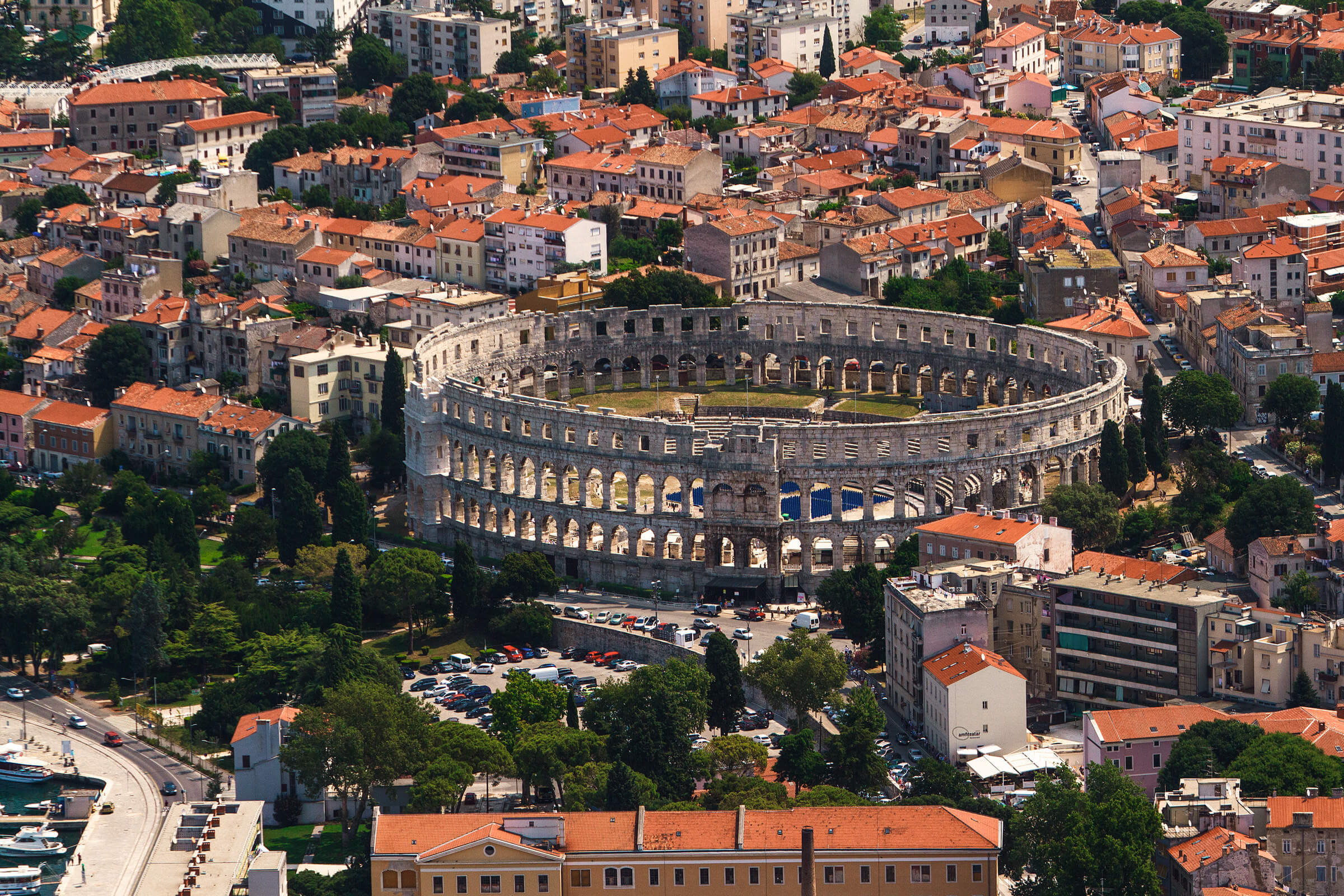
Photo: Mario Romulić
The ground plan is elliptical, the longer axis measuring about 130 m and the shorter one about 100 m. Gladiator fights took place in the central flat area called the arena, while the spectators could sit on the stone tiers or stand in the gallery. It is believed that the Amphitheater could seat about 20,000 spectators. Local limestone was used for its construction. In the Middle Ages, it was the site of knights’ tournaments and fairs.
Nowadays, the Pula Arena is also the main venue for the Pula Film Festival, one of the most important in the country.
Source: Pula Tourist Board
Trsat Castle
The Trsat Castle represents a strategically embossed lookout on a hill 138 meters above sea level dominating the city of Rijeka. It was mentioned as a parochial centre for the first time in 1288. At this same site, there was a Liburnian observation post from prehistoric times, used for monitoring the roads leading from the hinterland to the coast. This location served well for the Romans to establish their defence system, the so-called Liburnian limes, whose starting point was the Tarsatica fortress town – which was situated at the site of today’s Old City of Rijeka.
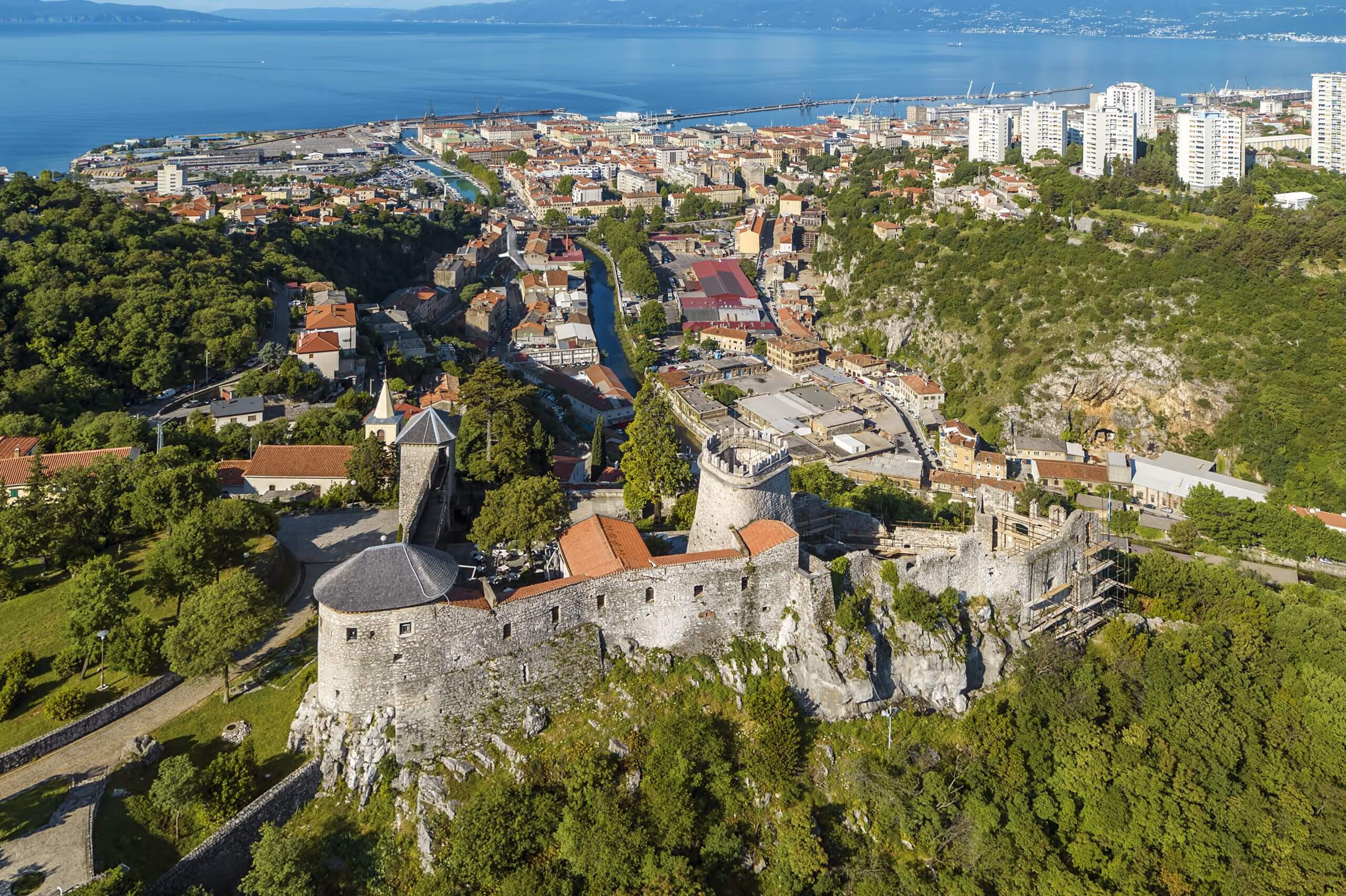
Image: Rijeka Tourist Board
The plateau of the Trsat Castle offers a magnificent view of the ruins situated on opposite hills, Katarina and Kalvarija, as well as of the whole area of Rijeka’s Old City. The Trsat Castle is one of the oldest fortifications on the Croatian coast which preserves the features of the early medieval town construction. Today the Trsat Castle has been enriched by new facilities and events – visual arts gallery, open-air summer concerts, and theatre performances as well as fashion shows and literary evenings.
Source: Rijeka Tourist Board
Roman Forum in Zadar
The Forum in Zadar was built by the first Roman Emperor Gaius Julius Caesar Octavian, as witnessed by the stone inscriptions dating back to the 3rd century when the construction finished. It was once enclosed by a portico with galleries on the first floor, and under the portico there used to be shops and stalls.
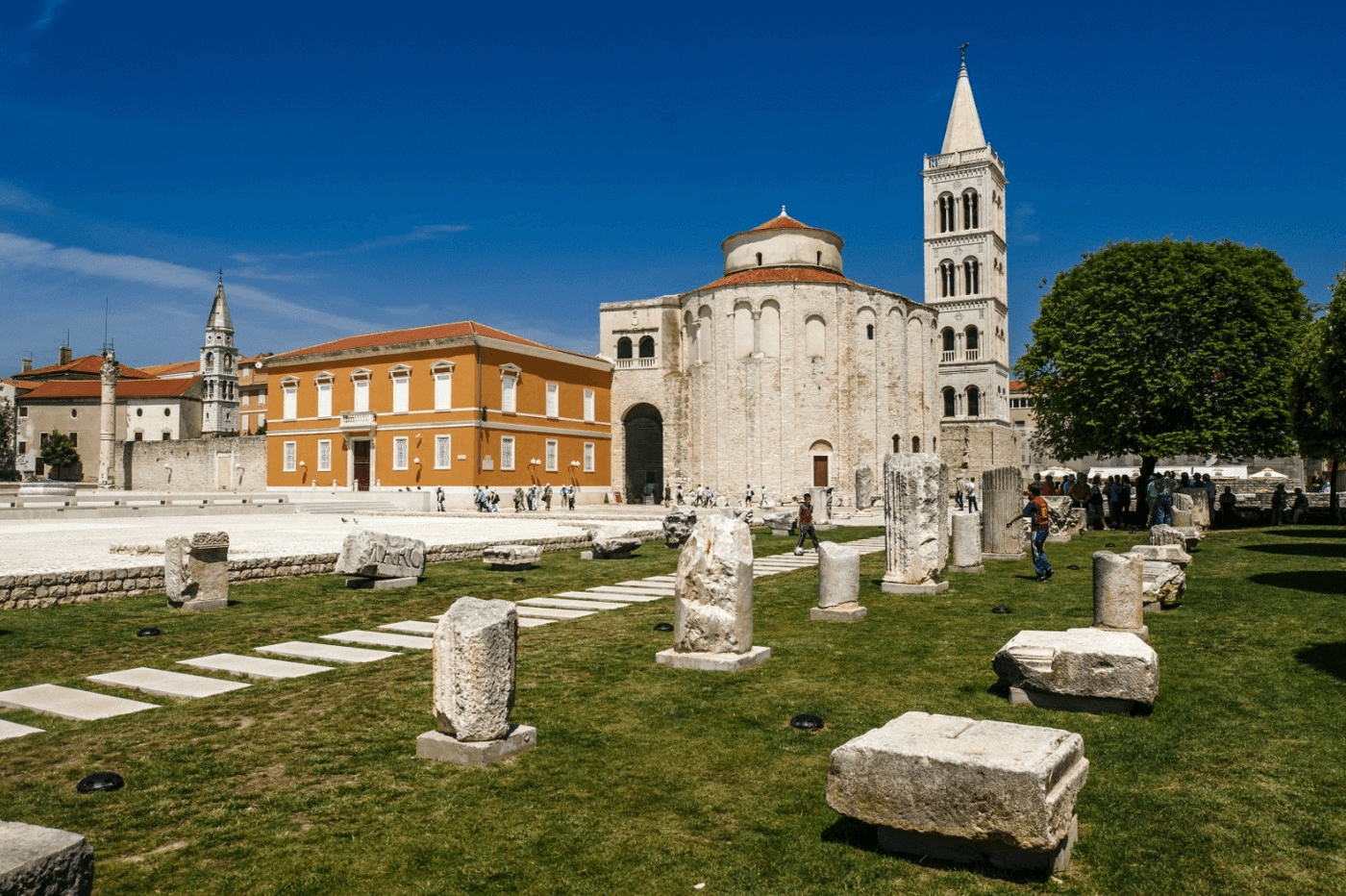
Image: Zadar Tourist Board
Since the first century B.C., the Forum was the main gathering place for Roman soldiers, religious people, administrators of the Republic and later of the Empire, as well as for traders and all Zadar citizens in Antiquity. At the time of its full glory, the Forum was surrounded on three sides by a magnificent portico. Today, it is an inevitable square for strolling and one of the symbols of the city.
Source: Zadar Tourist Board
St. James Cathedral in Šibenik
The Cathedral of St. James in Šibenik is one of the most significant and most beautiful architectural achievements in Croatia and was included on the UNESCO Cultural World Heritage List in 2000. It was built over a stretch of more than a hundred years, during the 15th and 16th centuries, and is unique for it is entirely built of stone. The most important builders of the Cathedral were Juraj Dalmatinac (Georgius Mathei Dalmaticus) and Nikola Firentinac (Niccolò di Giovanni Fiorentino). The Cathedral was first built in Gothic and completed in Renaissance style.

Photo: Mario Romulić
Its beauty is especially emphasized by the imposing Renaissance dome, the work of Niccolò di Giovanni Fiorentino, which was damaged in the Croatian War of Independence, and nowadays is a special symbol of Šibenik. The Cathedral is also known for its iconographic innovations, among which a special place is occupied by sculptures of 71 heads on the outside part of the shrine, the work of Georgius Mathei Dalmaticus, for which scientists are still not quite sure who they represent.
Source: Šibenik Tourist Board
Trogir Old Town
Due to its geographical position, Trogir has always been a perfect place to live. With its naturally sheltered harbour, many springs of drinking water, fertile land inland, and stone from local quarries, Trogir has been inhabited for more than 3,600 years. years. This inspiring Mediterranean city has attracted many great masters since the time of the ancient Greeks. These masters lived in Trogir and created some of their most famous masterpieces here. Various artists, writers, craftsmen, and travelers found their inspiration here and have left numerous traces of their work.
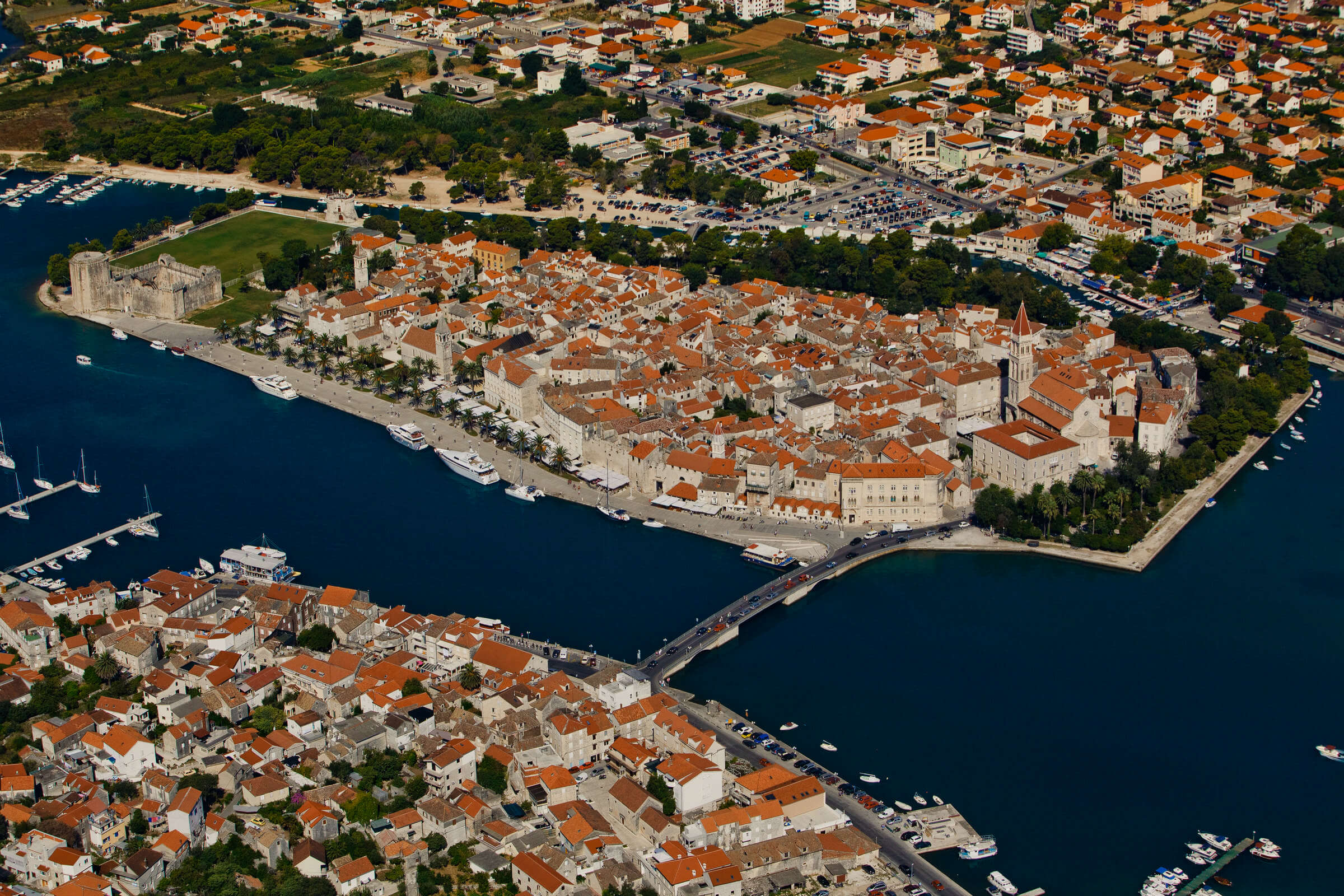
Photo: Mario Romulić
Trogir is a unique example in the history of European architecture and is the city with the largest number of signs or stone markings in Europe. Each brand has its own meaning. Some of them mark the end of construction, some represent the personal signature of the master, and some are engraved votive prayers. The masters also carved games in stone, such as chess, which was used as entertainment during their construction break.
Source: Trogir Tourist Board
Roman Amphitheatre in Solin
At the westernmost point of Solin (Salona) lies the most recognizable building of Roman architecture, the Amphitheatre, in the second half of the second century A.D. The remains of such an imposing Roman amphitheater indicate that gladiator fights were held in the city of Salona just as in other parts of the Roman empire, until the fifth century when they were banned.
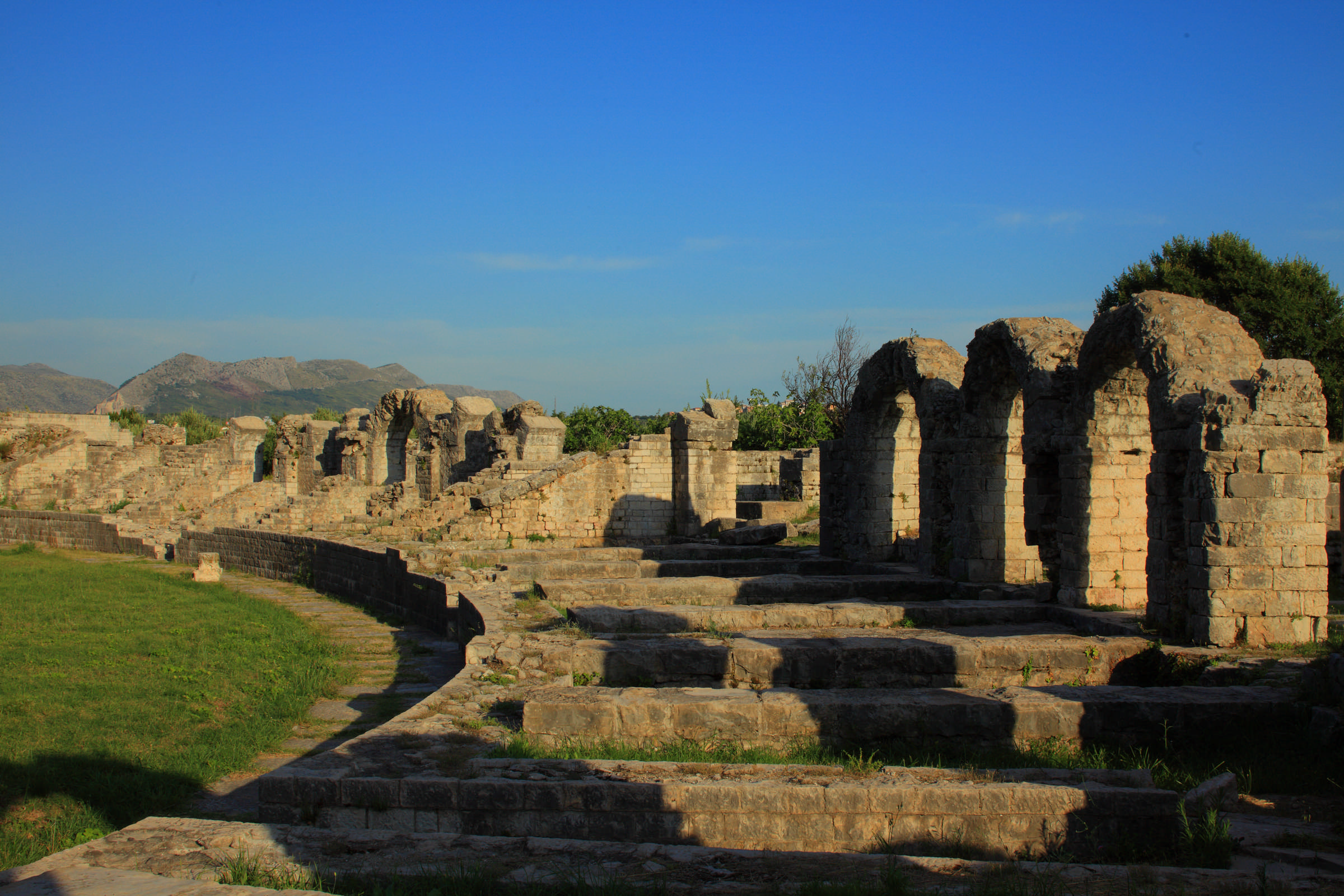
Photo: Mario Romulić
The building was ellipsoidal in shape, with three floors on the south side and one floor on the north side, which was conveniently laid down on a natural hillside. Despite its relatively small size (125 by 100 meters outer shell and 65 by 40 meters the arena), the Salonitan amphitheater could have been occupied by 15,000 up to 18,000 spectators. The auditorium was divided into three tiers, the lower two with seats and the upper one for standing.
Source: Solin Tourist Board
Diocletian’s Palace in Split
Diocletian’s Palace is one of the best-preserved monuments of Roman architecture in the world. The Emperor’s Palace was built as a combination of a luxury villa – a summer house and a Roman military camp (castrum), divided into four parts with two main streets. The southern part of the Palace was intended for the Emperor’s apartment and appropriate governmental and religious ceremonies, while the north part was for the Imperial guard – the military, servants, storage, etc.
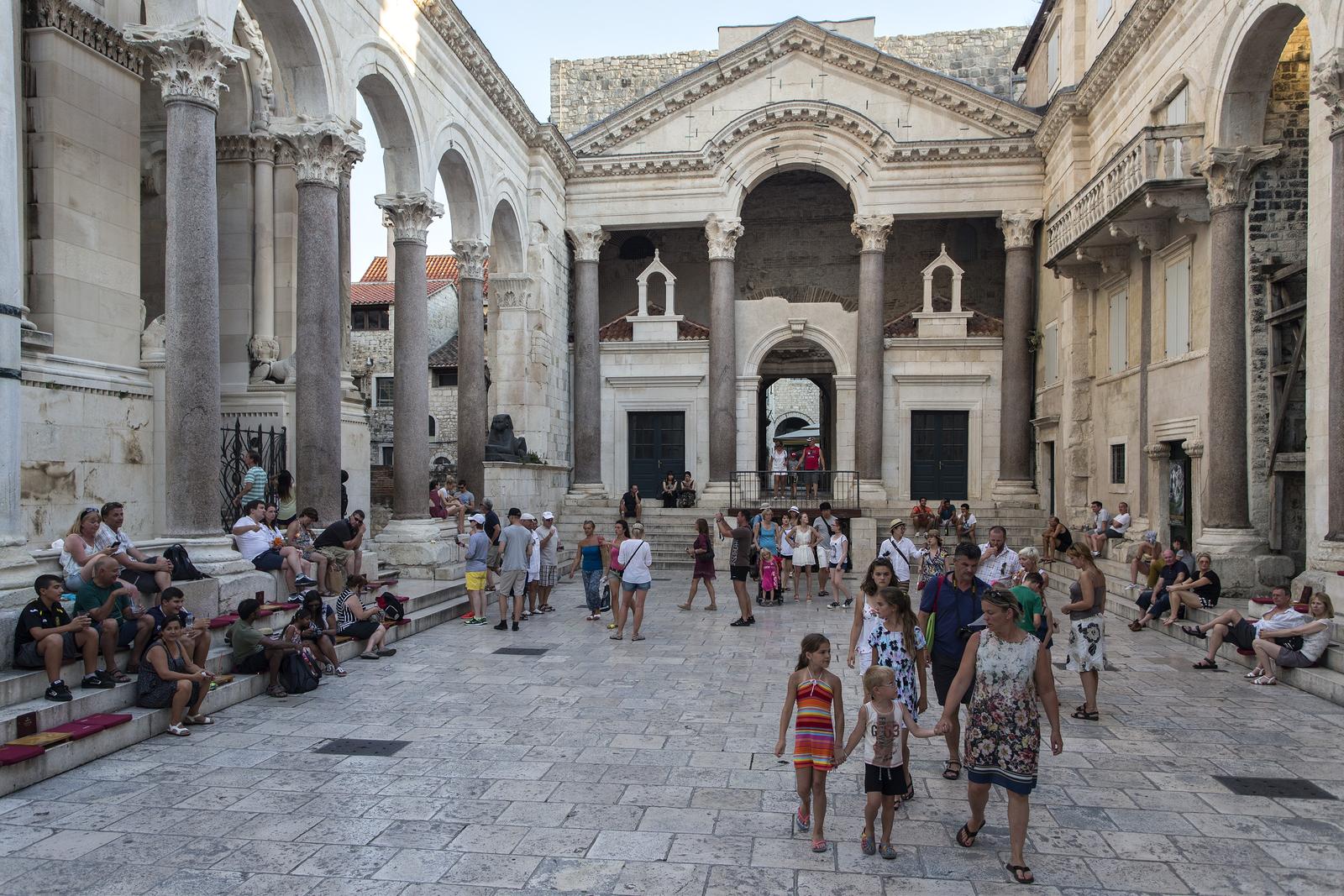
Photo: Davor Puklavec/PIXSELL
The Palace is a rectangular building (approximately 215 x 180 meters) with four large towers at the corners, doors on each of the four sides, and four small towers on the walls. The lower part of the walls has no openings, while the upper floor is open with a monumental porch on the south and halls with grand arch windows on the other three sides. Over the centuries the Palace inhabitants, and later also the citizens of Split adapted parts of the palace for their own requirements, thus the inside buildings, as well as the exterior walls with the towers, significantly changed the original appearance, but the outlines of the Imperial Palace are still very visible.
Source: Split Tourist Board
Walls of Ston
The walls of Ston were built in 1333 when Ston became a part of the Republic of Dubrovnik. Their purpose was to defend the Republic and the peninsula. Dubrovnik government in 1335 and amended in 1370 and is considered one of the best planned and best structured cities in Europe. The walls of Ston were a massive architecture and construction feat. Originally 7000-meters long (22 965 ft.), they consist of several parts; the Ston city walls, the Mali Ston city walls, and the Big wall with its three forts.
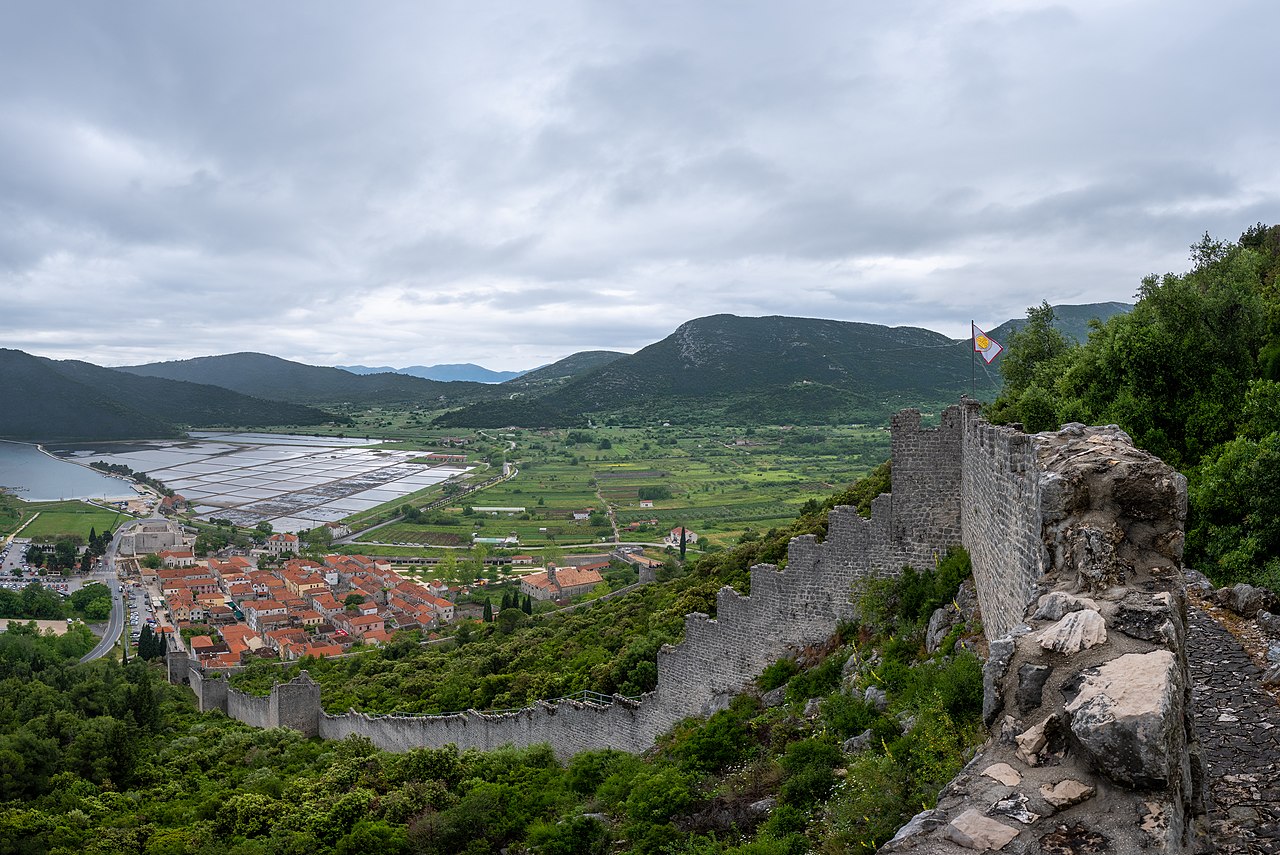
Photo: Jules Verne Times Two/Wikimedia Commons
Its forts and towers are strengthened by 10 round and 31 square flanking towers and 6 semi-circular bastions. The walls were last used in the 19th century for the defense of the city and salt pans, and today they are priceless monuments of immense architectural and cultural value. You can visit the Walls during the whole year. Take a walk around the city of Ston (in roughly 20 minutes) and from Ston to Mali Ston (in roughly 40 minutes).
Source: Ston Tourist Board
Walls of Dubrovnik
The successful development of Dubrovnik in the past was conditioned primarily by its favorable geographical position, and by an economy based on maritime and merchant activities. When entering the Adriatic Sea, Dubrovnik is the first island-protected port on the maritime route going from east to west, with quick access to the hinterland by way of the Neretva Valley. Latest archaeological research has shown that a settlement dating to the 6th century or probably even earlier existed under today’s city. It expanded with the arrival of the Croats in the 7th century, following the abandonment of ancient Epidaurus (today’s Cavtat).
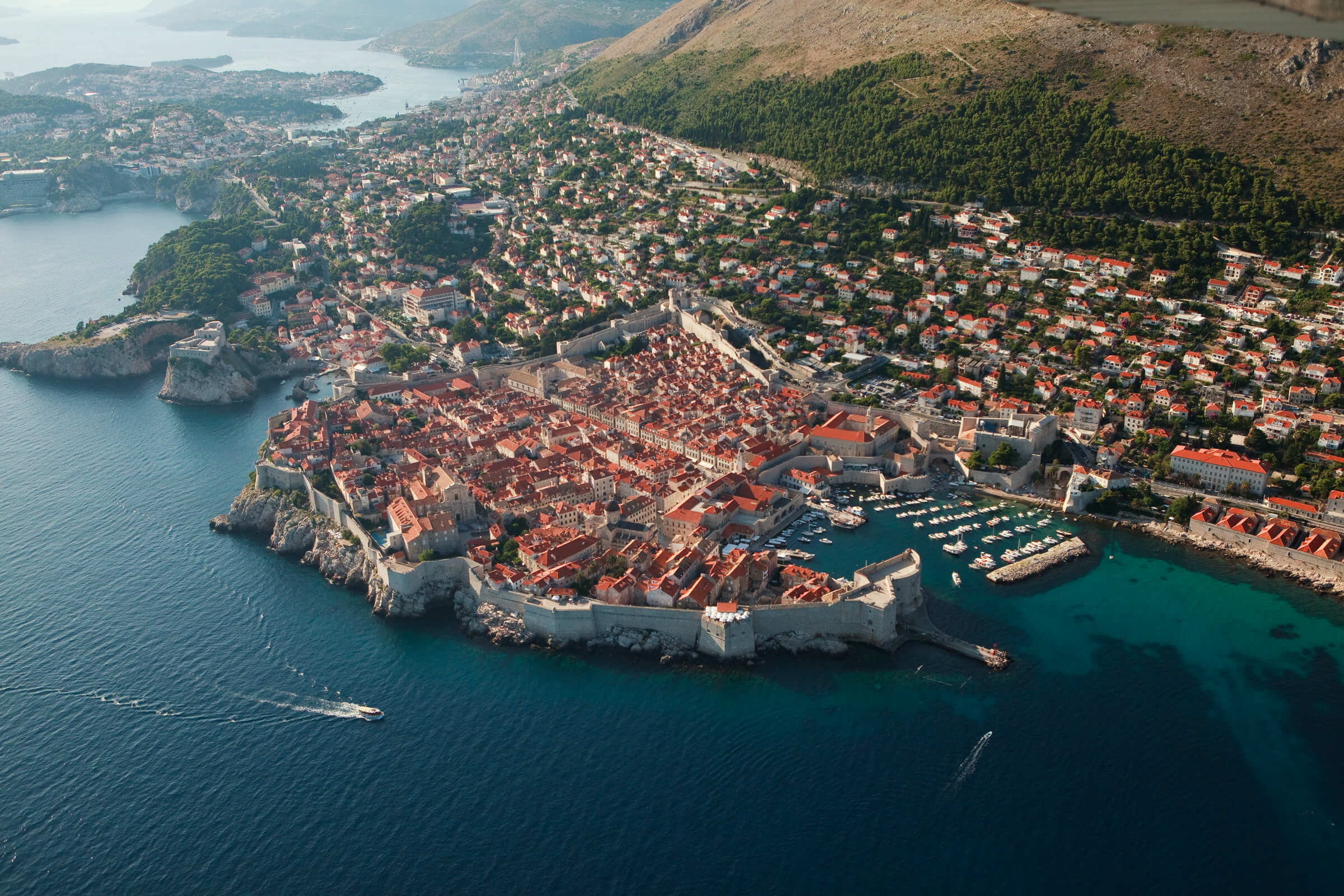
Photo: Mario Romulić
The intensification of traffic between the East and West both during and after the Crusades resulted in the development of maritime and mercantile centers throughout the Mediterranean and the Adriatic Sea in the 12th and 13th centuries. Dubrovnik was one of them. The Zadar Treaty in 1358 liberated Dubrovnik from Venetian rule, and it was crucial to the successful furthering of its development.
For more on travel in Croatia, follow TCN’s dedicated page.

